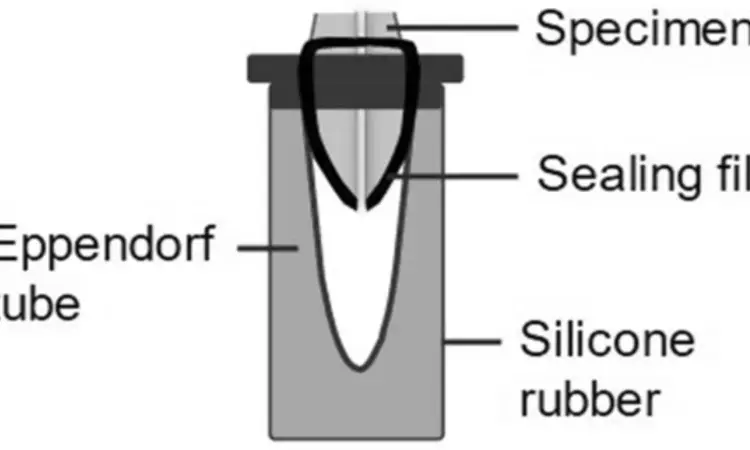- Home
- Medical news & Guidelines
- Anesthesiology
- Cardiology and CTVS
- Critical Care
- Dentistry
- Dermatology
- Diabetes and Endocrinology
- ENT
- Gastroenterology
- Medicine
- Nephrology
- Neurology
- Obstretics-Gynaecology
- Oncology
- Ophthalmology
- Orthopaedics
- Pediatrics-Neonatology
- Psychiatry
- Pulmonology
- Radiology
- Surgery
- Urology
- Laboratory Medicine
- Diet
- Nursing
- Paramedical
- Physiotherapy
- Health news
- Fact Check
- Bone Health Fact Check
- Brain Health Fact Check
- Cancer Related Fact Check
- Child Care Fact Check
- Dental and oral health fact check
- Diabetes and metabolic health fact check
- Diet and Nutrition Fact Check
- Eye and ENT Care Fact Check
- Fitness fact check
- Gut health fact check
- Heart health fact check
- Kidney health fact check
- Medical education fact check
- Men's health fact check
- Respiratory fact check
- Skin and hair care fact check
- Vaccine and Immunization fact check
- Women's health fact check
- AYUSH
- State News
- Andaman and Nicobar Islands
- Andhra Pradesh
- Arunachal Pradesh
- Assam
- Bihar
- Chandigarh
- Chattisgarh
- Dadra and Nagar Haveli
- Daman and Diu
- Delhi
- Goa
- Gujarat
- Haryana
- Himachal Pradesh
- Jammu & Kashmir
- Jharkhand
- Karnataka
- Kerala
- Ladakh
- Lakshadweep
- Madhya Pradesh
- Maharashtra
- Manipur
- Meghalaya
- Mizoram
- Nagaland
- Odisha
- Puducherry
- Punjab
- Rajasthan
- Sikkim
- Tamil Nadu
- Telangana
- Tripura
- Uttar Pradesh
- Uttrakhand
- West Bengal
- Medical Education
- Industry
ProTaper Next system combined with manual nickel-titanium Hedstrom could reduce apical extrusion and remove filling materials

ProTaper Next system (PTN) combined with manual nickel-titanium Hedstrom (MNiTiH) could reduce the apical extrusion and remove filling materials more efficiently than PTN combined with chloroform suggests a new study published in the Scientific Reports
Root canal treatment aims to reduce the intracanal bacterial content that will then allow periradicular lesions to heal. Due to the complexity of the anatomy of the root canal system and the severity of endodontic infection, the failure rate of root canal treatment reported in the literature is as high as 17%. Root canal retreatment is usually the preferred option for teeth in which endodontic treatment has failed, as there is a greater opportunity to eradicate any intraradicular source of infection compared with a surgical approach. Ideally, initial filling should be entirely removed in the process of root canal retreatment because the remnants containing microorganisms could compromise the effectiveness of canal disinfection using canal irrigation and intracanal medication. Therefore, the complete removal of the filling material remnants may be considered an important step for successful endodontic retreatment
This study aimed to evaluate the removal effect of the ProTaper Next system (PTN) combined with manual nickel-titanium Hedström (MNiTiH) files or chloroform on filling materials of mandibular incisors by microcomputed tomography (micro-CT). Sixty-four extracted human mandibular incisors were finally selected and assigned to two groups (n = 32) based on root canal morphology after instrumentation. Two subgroups (n = 16) were formed based on two retreatment methods.
The volume of residual filling materials (RFMs) and the surface area covered by RFMs were analyzed by micro-CT, the apical extrusion and the time taken for removing the filling materials were recorded. A smaller percentage of the volume of RFMs and less surface area covered by RFMs occurred in PTN combined with MNiTiH groups and round-shaped canal incisors (P < 0.05). The time taken for removing the filling materials was not significantly different in all groups (P > 0.05). The apical extrusion was significantly less in PTN combined with MNiTiH groups than in PTN combined with chloroform groups (P < 0.05). Neither of the two methods rendered root canals completely free from filling materials.
ProTaper Next system (PTN) combined with manual nickel-titanium Hedström (MNiTiH) could reduce the apical extrusion and remove filling materials more efficiently than PTN combined with chloroform.
Reference:
Yang, X., Wang, Y., Ji, M. et al. Microcomputed tomographic analysis of the efficiency of two retreatment techniques in removing root canal filling materials from mandibular incisors. Sci Rep 13, 2267 (2023). https://doi.org/10.1038/s41598-023-29156-0
Dr. Shravani Dali has completed her BDS from Pravara institute of medical sciences, loni. Following which she extensively worked in the healthcare sector for 2+ years. She has been actively involved in writing blogs in field of health and wellness. Currently she is pursuing her Masters of public health-health administration from Tata institute of social sciences. She can be contacted at editorial@medicaldialogues.in.
Dr Kamal Kant Kohli-MBBS, DTCD- a chest specialist with more than 30 years of practice and a flair for writing clinical articles, Dr Kamal Kant Kohli joined Medical Dialogues as a Chief Editor of Medical News. Besides writing articles, as an editor, he proofreads and verifies all the medical content published on Medical Dialogues including those coming from journals, studies,medical conferences,guidelines etc. Email: drkohli@medicaldialogues.in. Contact no. 011-43720751


